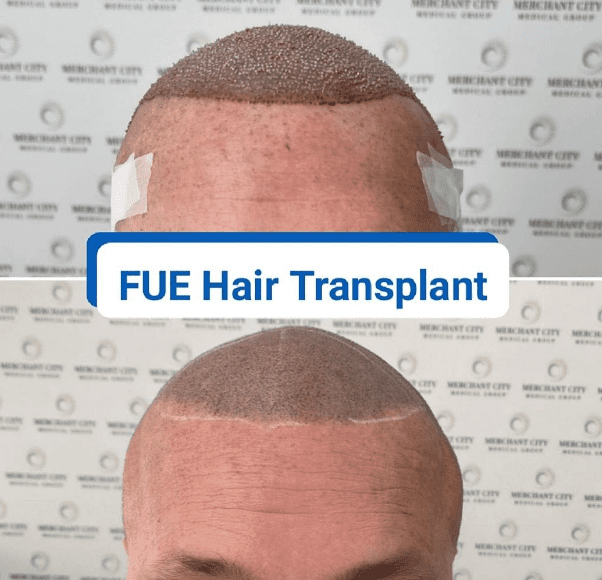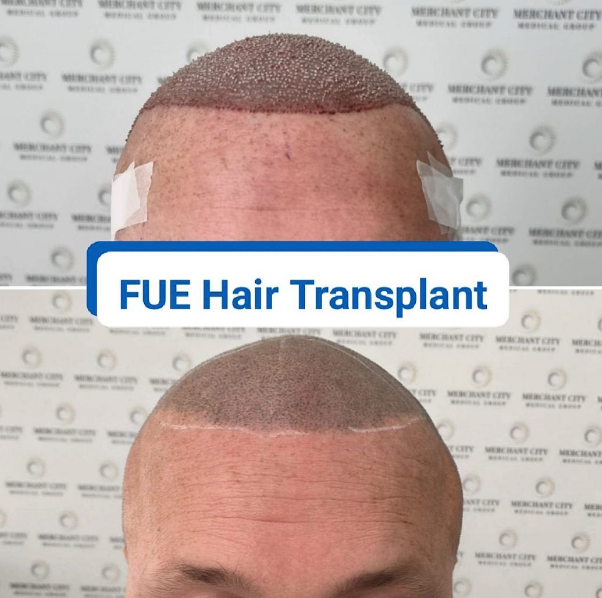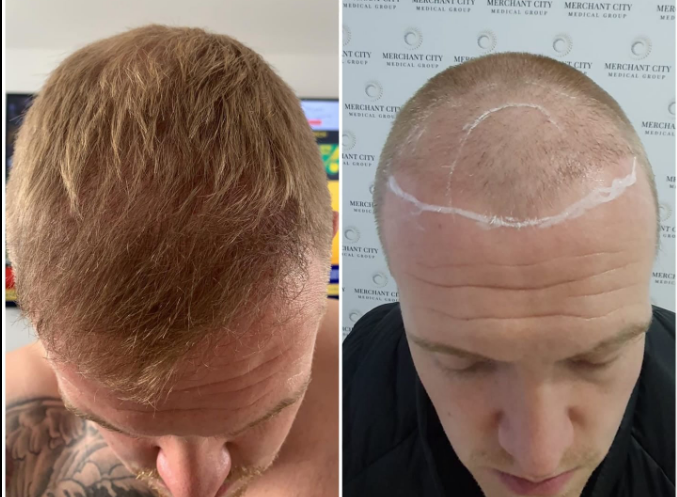
The History of Hair Transplant

A successful FUE transplant
The journey of hair transplantation, from ancient experimental techniques to modern, cutting-edge procedures, is fascinating.
It reveals a fascinating evolution of science, culture, and innovation.
In the 1930s, the inception of contemporary transplant techniques took root in Japan, as surgeons experimented with small grafts.
This included “follicular unit grafts,” primarily intended to be damaged to restore eyebrows or lashes rather than addressing baldness (Okuda, 1939).
Regrettably, their pioneering efforts did not gain widespread attention globally at the time, and the upheavals of World War II prolonged the isolation of their groundbreaking advances for an additional two decades.
The history of hair transplants continued when Dr. Norman Orentreich’s pioneering work in the 1950s introduced the concept of follicular unit transplantation (FUT).
His groundbreaking research laid the foundation for modern hair restoration techniques.
However, the evolution continued with the advent of follicular unit extraction (FUE) in the early 2000s, offering a less invasive alternative.
Early Attempts at Hair Restoration
Throughout history, diverse cultures have showcased early attempts at addressing hair loss.
Ancient Egyptians utilised a concoction of fats from animals, serpents, and porcupines mixed with various plants to stimulate hair growth.
In ancient Greece, concoctions involving opium, horseradish, and pigeon droppings were believed to combat baldness.
Additionally, ancient Chinese remedies involved concoctions of herbs and oils.
These methods, although rooted in creativity, often needed more scientific efficacy.
Fast forward to the 19th century, when wigs and hairpieces gained popularity in Europe as a more immediate solution.
While reflecting historical ingenuity, these endeavors marked the early stages of humanity’s quest for hair restoration.
Emergence of Modern Hair Transplant Techniques
It is now clear that in the ever-evolving landscape of hair restoration, the journey from primitive methods to the advent of modern hair transplant procedures represents a significant milestone.
This transition marked a crucial shift in hair loss treatment, introducing techniques that laid the foundation for contemporary practices.
So, what is the transition like?
Transition to Modernity: Pioneering Procedures and Key Milestones
The transition from traditional to modern hair transplant methods was characterized by pivotal moments that shaped the field.
One notable breakthrough was Dr. Norman Orentreich’s pioneering work in the 1950s when he introduced Follicular Unit Transplantation (FUT).
This technique involved transplanting hair in natural groupings, a departure from earlier methods.
Orentreich’s contribution laid the groundwork for subsequent advancements, setting the stage for developing the modern hair transplant landscape.
Another milestone unfolded in 2002, when Follicular Unit Extraction (FUE), a less invasive alternative, gained popularity.
These milestones collectively delineate the transformative journey toward the contemporary landscape of hair restoration.
Follicular Unit Extraction (FUE): A Game-Changer

A one-day FUE procedure
Picture this: a realm where hair restoration meets innovation, and the tale’s hero is none other than Follicular Unit Extraction (FUE).
This method emerged as a true maverick, shaking up the traditional norms of hair transplantation.
Unlike its predecessors, FUE stepped onto the scene with a promise – a less invasive alternative that could change the game.
Imagine the magic happening at a microscopic level – one hair follicle at a time.
FUE, the maestro, delicately extracts individual follicular units, leaving behind the outdated concept of a linear scar.
No more dramatic incisions; instead, picture tiny, nearly invisible scars resembling a constellation of dots.
But the allure doesn’t end there.
FUE isn’t just about being less invasive; it’s about quicker recoveries, minimal post-operative restrictions, and a ticket to confidently flaunting that short hairstyle you’ve been dreaming of.
With FUE, the journey to hair restoration becomes a tale of innovation and refinement, a narrative where less is indeed more.
The Role of Technological Advancements in the Popularity of FUE
Let’s dive into the world of hair restoration, where tech wizards cast their spells and turn FUE clients into stars.
Imagine this: a surgeon, not with a wand, but with a tiny micropunch tool, intricately dancing on your scalp like a maestro.
Thanks to technological sorcery, FUE became a sensation.
Why did FUE steal the limelight? It’s not just about the precision; it’s the allure of a procedure that reads like a sci-fi novel.
We’ve moved from the era of big scars to tiny, nearly invisible dots, all thanks to tech turning FUE into a trendsetter.
So, here’s to the magic of futuristic charm, making FUE the rockstar of hair restoration.
FUE: Paving the Future Path in Hair Transplants
Imagine a future where hair restoration is not just a solution but an art – enter Follicular Unit Extraction (FUE), the beacon illuminating the way forward.
FUE is not merely a technique; it’s a glimpse into the future of hair transplants.
Why is FUE the future, you ask?
Picture a scenario where scars are but a whisper, recovery is a breeze, and precision is an art form.
With its micro-level prowess, FUE offers a glimpse into a world where traditional incisions are relics of the past.
Technological leaps, like the ARTAS system, have transformed FUE into a symphony of precision where every hair follicle finds its perfect place.
The future is not just about regaining what’s lost; it’s about doing it seamlessly, with minimal fuss and maximal results.
FUE, with its less invasive charm, is the future of hair transplants—a future in which each follicle tells a story of precision, innovation, and the art of restoration.
Unlocking Brilliance: The Sapphire FUE Advantage
Choosing a hair transplant is like picking a masterpiece for your scalp, and Sapphire FUE emerges as the crown jewel in restoration.
Are you curious?
Well, imagine a procedure where precision meets sophistication, and every follicle finds its place with the grace of a finely cut gem.
Sapphire FUE is not your run-of-the-mill transplant; it’s a symphony conducted with a precision instrument.
The magic lies in the sapphire blade – a touch of luxury in the restoration world.
Picture this: a blade crafted from sapphire, dancing delicately on your scalp, creating incisions with unparalleled finesse.
This isn’t just a procedure; it’s an art form.
But why should you choose Sapphire FUE?
It’s about more than just precision; it promises quicker healing, reduced scarring, and a journey where every step feels like a pampering session for your scalp.
So, if you’re seeking a hair transplant that’s not just a procedure but an experience, Sapphire
FUE is your ticket to unlocking brilliance on your scalp canvas.
Conclusion: Unveiling the Canvas of Hair Restoration
As we journeyed through the history of hair transplants, from ancient concoctions to modern marvels, one name emerged as the epitome of precision and sophistication – Sapphire FUE.
It’s not merely a technique; it’s a masterpiece crafted with a sapphire touch, transforming the landscape of hair restoration.
In the vast world of options, Merchant City Medical Group is the beacon of expertise in Sapphire FUE.
We don’t just offer a procedure; we offer an experience – a symphony of precision, innovation, and the promise of unlocking brilliance on your scalp canvas.
Choosing Sapphire FUE isn’t just a decision; it’s a declaration that your hair restoration journey deserves nothing but the best.
Trust the experts at Merchant Medical City Group to turn your hair restoration into a work of art. Contact us today.

